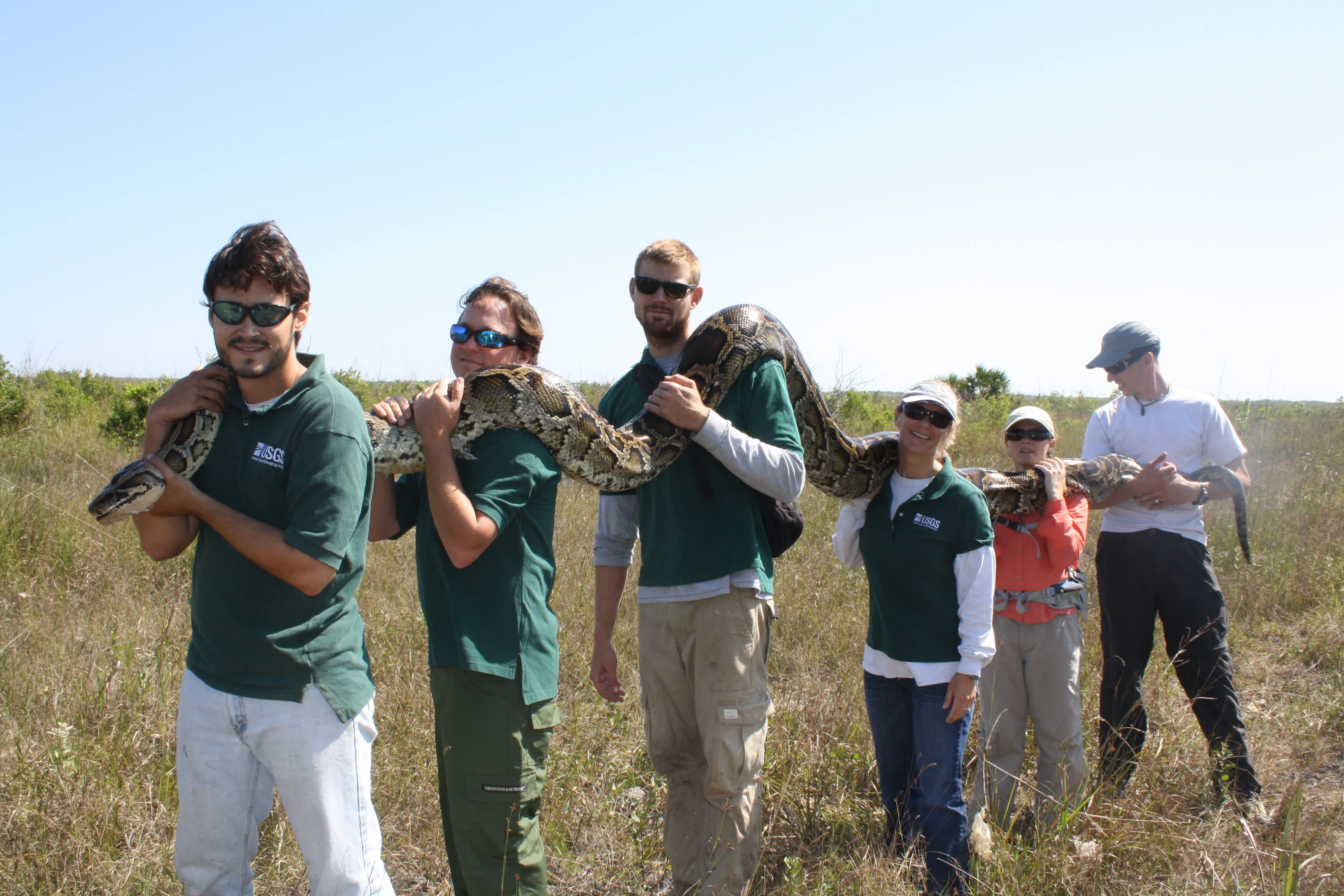USDA to Trap Everglades Pythons with Special Cages
OutdoorHub Reporters 09.30.13

Over the next few months the U.S. Department of Agriculture (USDA) will begin testing specially-designed python traps in the Florida Everglades. Burmese pythons, which are among the largest snakes in the world, are not native to North America. Despite this, a large number of the animals has taken up residence in the warm and humid environment of the Everglades and are causing headaches for Florida wildlife officials. According to the Associated Press, the USDA will be attempting to alleviate the problem by trapping the reptiles with a recently-patented cage design.
The cages are thin and lengthy, just like the pythons themselves. Snakes caught in one of these traps can then be deposited in a net for live capture. USDA researchers will begin testing soon at the National Wildlife Research Center’s Gainesville field station to decide which type of bait is best for luring in the large snakes.
“There’s still more to be learned, there’s still more to be tested,” said biologist John Humphrey. “This is just one of your tools that you have to put together with other things to get the problem solved.”
These cages are the most recent effort by authorities to quell Florida’s python problem. The Florida Fish and Wildlife Conservation Commission encourages hunting of the large reptiles and held a large competition aimed at reducing the invasive snake population earlier this year. While hunting has produced some results, biologists are looking into other ways to minimize the damage the snakes are inflicting on the Everglades. Since their arrival, native mammal species’ numbers have dropped significantly. Pythons are sizable predators and have been known to consume prey as large as deer.
While the snakes do not usually pose a threat to adult humans, they can be a danger to pets and small children. Earlier this month a rock python killed and tried to eat a 60-pound Siberian husky in Miami-Dade county. While not as common as Burmese pythons, rock pythons are also an invasive species and can disrupt the ecosystems they are introduced to.
The USDA traps will be one-size-fits-all for invasive pythons. At five feet long, the cages feature two separate triggers that must be activated at the same time for the trap to close. This ensures that only large pythons, rather than native snakes, will be trapped.
“The largest native snakes are generally somewhat smaller than the youngest of the pythons,” Humphrey said. “That was the impetus of the design.”
The traps are also useful for researchers since they capture pythons alive. Live specimens are useful for radio-tracking collars or population studies. Similar cages have been used in the Everglades before for the purpose of capturing live specimens but it is currently unknown how effective these traps will be at controlling the snake population.

